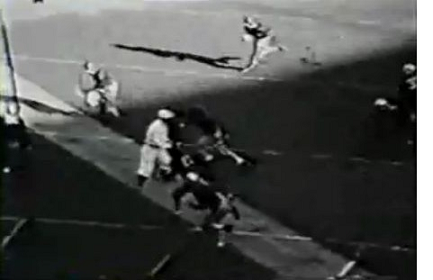
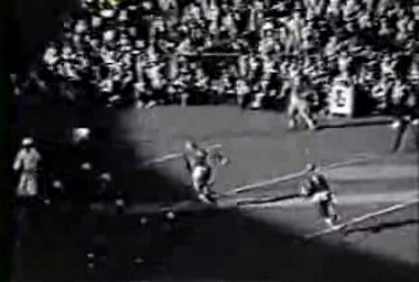
Pictured above are 2 views of the same moment in the same play, Pittsburgh halfback Marshall Goldberg's touchdown that was negated by a penalty in Pitt's 0-0 tie at Fordham. This was the 3rd straight season that Pitt and Fordham battled to a scoreless tie. Both then won out, Pitt finishing 9-0-1 and Fordham 7-0-1. But despite the tie and effectively equal records, Pittsburgh is the consensus choice for 1937 mythical national champion (MNC), while no organization has selected Fordham to even share in the title, nor does Fordham claim an MNC

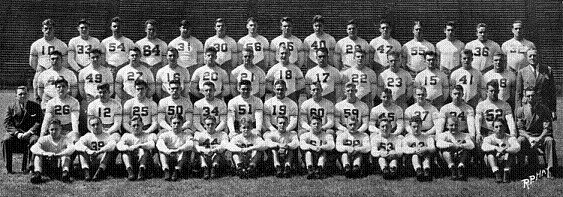
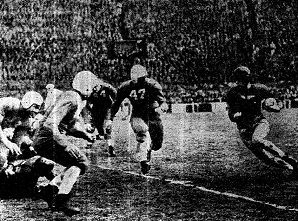
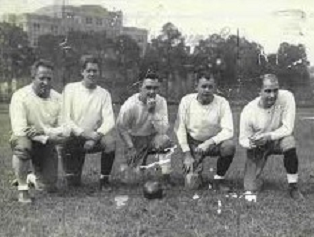
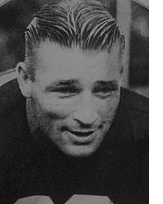
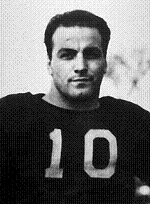
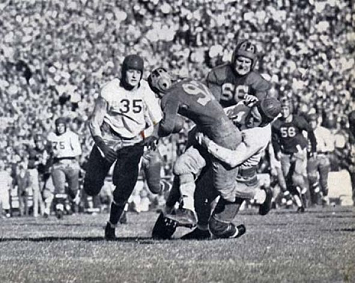
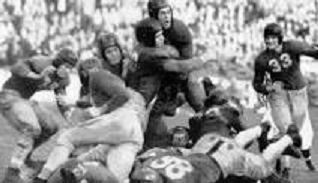
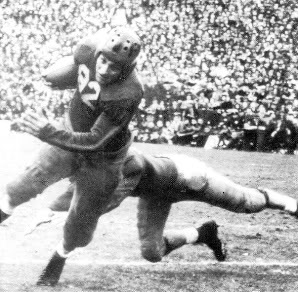
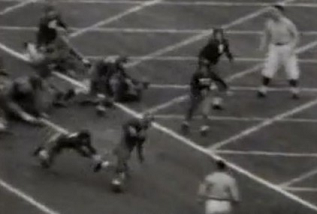
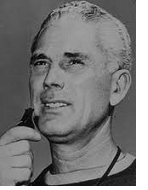 Santa
Clara emerged as a strong mid-major football program in 1929 under head coach
Clipper Smith, who had played for Knute Rockne at Notre Dame. Smith
went 38-22-4 at Santa Clara 1929-1935, beating Stanford once and Cal 3
times. They might have been ranked in an AP poll's top 25, had one
existed, in 3 of those seasons. Hall of Fame coach Buck Shaw (pictured at left), also a
Rockne player, had been the line coach under Smith, and in 1936 he took over as head coach and brought Santa Clara
up to another level. He went 47-10-4 1936-1942, but the big seasons
were his first 2, as he finished both by upsetting a 9-win Louisiana
State team in the Sugar Bowl. Santa Clara finished ranked in 5 of
Shaw's 7 seasons there (original and fixed AP polls)
Santa
Clara emerged as a strong mid-major football program in 1929 under head coach
Clipper Smith, who had played for Knute Rockne at Notre Dame. Smith
went 38-22-4 at Santa Clara 1929-1935, beating Stanford once and Cal 3
times. They might have been ranked in an AP poll's top 25, had one
existed, in 3 of those seasons. Hall of Fame coach Buck Shaw (pictured at left), also a
Rockne player, had been the line coach under Smith, and in 1936 he took over as head coach and brought Santa Clara
up to another level. He went 47-10-4 1936-1942, but the big seasons
were his first 2, as he finished both by upsetting a 9-win Louisiana
State team in the Sugar Bowl. Santa Clara finished ranked in 5 of
Shaw's 7 seasons there (original and fixed AP polls)